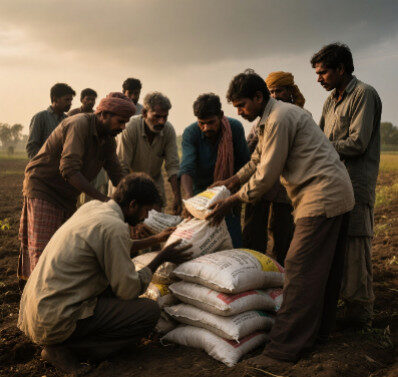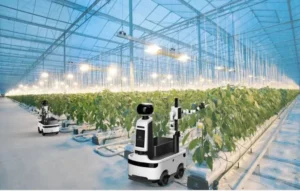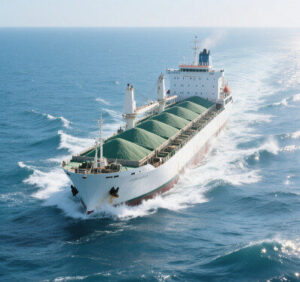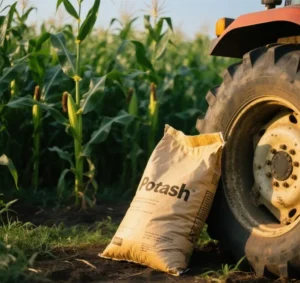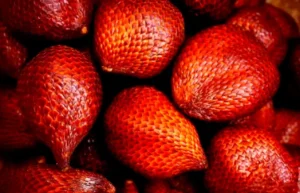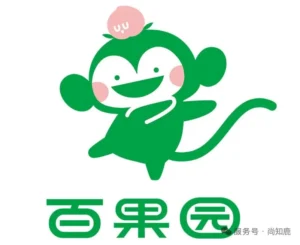India, a pivotal nation in global agriculture, is currently facing a severe fertilizer crisis that poses significant challenges to its agricultural productivity and food security. As one of the world’s largest importers of fertilizers, India’s dependence on foreign supplies, especially from China, leaves it susceptible to supply chain disruptions and price fluctuations. The crisis impacts not only farmers’ livelihoods but also has broader economic and social ramifications.
Heavy Reliance on Chinese Specialty Fertilizers
India’s agricultural sector heavily relies on imported specialty fertilizers, including water-soluble and organic variants, which are crucial for high-value, export-oriented crops such as fruits and vegetables. According to Rajib Chakraborty, national president of the Soluble Fertilizers Industry Association (SIFA), the disruption in Chinese fertilizer exports has directly impacted India’s crop output, leading to rising food prices. China supplies around 80% of India’s specialty fertilizers, making changes in China’s export policies critical to India’s agricultural stability. Reliance on a single supplier leaves the country vulnerable to geopolitical shifts and market fluctuations, as demonstrated by China’s recent tightening of export controls.
Phosphate Fertilizer Shortage
In addition to the shortage of specialty fertilizers, India is facing a severe shortage of phosphate fertilizers, especially diammonium phosphate (DAP), which is essential for growing staple crops such as wheat and soybeans. China, the world’s largest DAP exporter, slashed its shipments to India by 97.4% year-over-year in May 2025, with exports plummeting to only 12,900 tons. This forced India to seek alternatives from Morocco, Saudi Arabia, and Russia. However, these substitutes come at a steep cost. For example, India’s recent import deals with Jordan priced DAP at $781.5 per ton CFR, while Saudi Arabia’s supply cost $810 per ton—significantly higher than pre-crisis rates of $515–$525 per ton. The shift to more expensive sources has increased input costs for farmers, putting a strain on their finances and productivity.
Key Drivers of the Fertilizer Crisis
The current crisis is driven by multiple interconnected factors:
- Global supply chain disruptions: China’s intensified inspections of fertilizer exports have effectively throttled supply, though an official ban has not been issued.
- Rising raw material costs: Key ingredients for DAP production, such as phosphorus rock (priced at 1,020 yuan per ton in China) and sulfur ($2,450–$2,465 per ton), have surged due to global shortages, increasing manufacturing costs.
- Geopolitical Tensions: Ongoing conflicts and trade restrictions have disrupted traditional supply chains, forcing India to pay high prices for imports.
- Domestic Production Shortfalls: India lacks the capacity to meet domestic demand for specialty fertilizers and diammonium phosphate (DAP), forcing it to rely on imports despite government subsidies.
Soaring Fertilizer Prices
The fallout from these disruptions is evident in the skyrocketing prices of fertilizer. DAP prices in India have climbed to $775–$782 per ton CFR, while farmers are forced to pay 1,700–1,800 INR per 50-kilogram bag on the black market—far exceeding the government’s subsidized price cap of 1,350 INR. The significant difference in prices between the official and black markets reflects the severity of the shortage, with farmers bearing the brunt of the inflated costs.
Domestic Production Limitations
Despite allocating $43.5 billion (372.16 billion INR) in subsidies from April to September 2025, India’s domestic production remains insufficient. The government’s support has failed to offset the price surge fully, as local manufacturing struggles to meet demand. Reliance on imports leaves the country vulnerable to external shocks.
Impacts on Indian Agriculture
The crisis is devastating for farmers and food security.
- Reduced crop yields: Forced to ration fertilizers, farmers face productivity losses. Some estimates suggest winter crop yields could plummet by up to two-thirds, threatening wheat and soybean harvests.
- Food inflation: Higher input costs have rippled through the supply chain, driving up prices for vegetables, fruits, and grains.
- Social Unrest: Economic distress has sparked protests, with over 2,000 tractors deployed in demonstrations against government policies in April 2025, highlighting the growing discontent among farmers.
Government Responses and Future Outlook
In order to address the crisis, the government is pursuing multi-pronged strategies:
- Securing alternative suppliers: Negotiations with Russia, Jordan, and Morocco aim to diversify import sources.
- Subsidy increases: DAP subsidies have increased to 27,799 INR/ton, though importers are still operating at a loss.
- Long-Term Investment: India must increase domestic fertilizer production and research to reduce its reliance on China.
Conclusion
India’s fertilizer crisis highlights the dangers of overreliance on imports and fragile global supply chains. Immediate action is imperative to stabilize supplies and prevent cascading agricultural failures. If left unchecked, the crisis could trigger deeper food shortages, inflation, and prolonged farmer distress, resulting in far-reaching economic and social costs. A sustainable solution requires balancing short-term emergency measures with long-term investments in domestic capacity and supply diversification. Only by doing so can India safeguard its agricultural future and food security.


